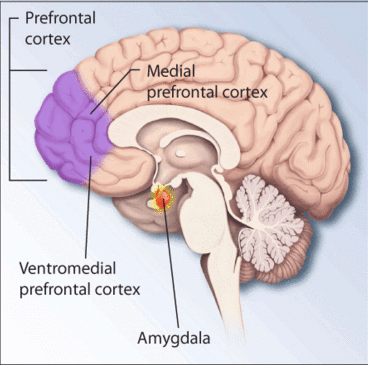PTSD symptoms may be prevented with ketamine

Columbia University Medical Center (CUMC) researchers have found that a single dose of ketamine, given one week before a stressful event, can buffer against a heightened fear response.
The study, conducted in mice, suggests that prophylactic administration of ketamine—a drug commonly used as general anesthetic or a rapid-acting antidepressant—might prevent post-traumatic stress disorder (PTSD) symptoms in soldiers and others who subsequently experience psychological trauma.
The study was published online in January in the journal Neuropsychopharmacology.
"Ketamine is a powerful drug, and we wouldn't advocate widespread use for preventing or reducing PTSD symptoms. But if our results in mice translate to humans, giving a single dose of ketamine in a vaccine-like fashion could have great benefit for people who are highly likely to experience significant stressors, such as members of the military or aid workers going into conflict zones," said study leader Christine A. Denny, PhD, assistant professor of clinical neurobiology in Psychiatry at CUMC.
There are few effective therapies for preventing or treating PTSD, an anxiety disorder that occurs in about one-quarter of individuals who experience psychological trauma. PTSD symptoms include re-living the trauma—experiencing repeated flashbacks, hyperarousal, and hyperreactivity—as well as mood changes, psychological numbing, and chronic physical symptoms such as headache. The likelihood that symptoms will develop depends on the nature and intensity of the trauma and an individual's response.
Previous studies, in both humans and animals, have shown that giving ketamine before trauma can help reduce stress-related symptoms. However, it was not clear when the drug should be administered relative to a traumatic episode in order to maximize its protective effects.
In the current study, mice were given a small dose of intravenous ketamine or a placebo either one month, one week, or one hour before they were subjected to a series of small shocks. The mice—conditioned to associate the test environment with the shocks—were later returned to the same environment and assessed for their freezing behavior, a measure of their conditioned fear response.
Only the mice given ketamine one week before the stressor exhibited reduced freezing when they were returned to the test environment. "Our findings indicate that the timing of ketamine administration is critical for buffering fear expression," said first author Josephine C. McGowan, a student at Barnard College when the study was performed and now a doctoral student in Neurobiology and Behavior at CUMC.
It is not known whether there is an intermediate window, between one week and one hour, where ketamine would also have a protective effect.
The researchers also found that giving ketamine immediately after the stressor did not affect the animals' fear response. However, giving ketamine one hour after a second shock decreased fear expression, suggesting that there may be another potential window after the initial trauma when the drug may be effective.
Dr. Denny's team is currently studying how ketamine works in the brain to influence the response to stress. The CUMC researchers hope to study prophylactic ketamine use in humans, ideally among military personnel.
More information: Josephine C McGowan et al, Prophylactic Ketamine Attenuates Learned Fear, Neuropsychopharmacology (2017). DOI: 10.1038/npp.2017.19
















